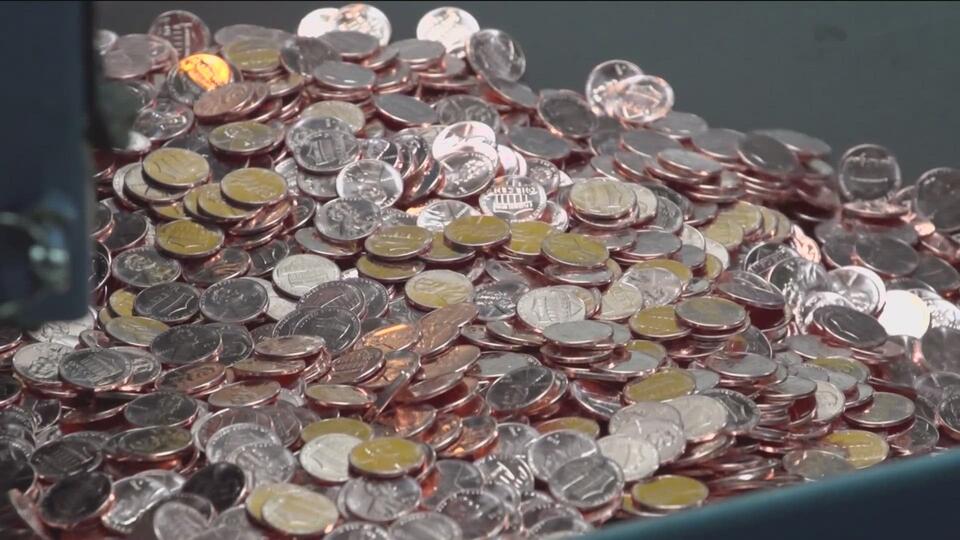The End Of The Penny? US To Halt Penny Circulation In 2026

Table of Contents
Economic Arguments for Eliminating the Penny
The Cost of Production
The simple truth is that producing a penny costs more than its one-cent value. The US Mint's expenses for minting pennies consistently exceed their face value, representing a significant drain on taxpayer resources. According to recent estimates, the cost to produce a single penny is approximately 2 cents. This means the government loses money on every penny produced. This financial inefficiency translates into wasted resources and lost opportunities.
- Wasted Resources: The production of pennies consumes significant amounts of zinc, copper, and energy.
- Alternative Uses: These resources could be redirected towards more productive sectors, improving infrastructure, or funding vital social programs.
Inefficiency in Daily Transactions
Handling large quantities of pennies is undeniably inconvenient. Retailers and consumers alike spend valuable time counting, sorting, and managing these small coins. This inefficiency translates into increased labor costs for businesses and frustration for customers.
- Time Lost: The sheer volume of pennies involved in transactions significantly slows down the checkout process.
- Transaction Speed Comparison: Studies have shown that transactions are significantly faster when pennies are excluded, leading to increased efficiency and reduced customer wait times.
- Business Impact: The handling and storage of pennies add to overhead costs for businesses, especially smaller retail establishments.
Environmental Impact
The environmental footprint of penny production is substantial. From mining raw materials to refining and transportation, the entire process contributes to carbon emissions and pollution.
- Environmental Costs: Mining operations required for penny production consume significant energy and create waste.
- Carbon Footprint: Studies estimate a substantial carbon footprint associated with the production and circulation of billions of pennies annually.
- Sustainable Alternatives: Transitioning to more sustainable materials for coins, or eliminating the need for pennies altogether, offers significant opportunities for environmental savings. For example, utilizing recycled materials or exploring alternative coin compositions could lessen the environmental impact.
Arguments Against Eliminating the Penny
Sentimental Value and Historical Significance
The penny holds a significant place in American history and culture. For many, it represents more than just a unit of currency; it carries sentimental value and evokes nostalgia. Eliminating the penny might feel like losing a piece of American heritage.
- Historical Significance: Pennies have been a part of American life for centuries, bearing witness to historical events and social changes.
- Emotional Attachment: Many people have a personal connection to pennies, using them for collections, passing them down through generations, or simply enjoying their historical design.
- Historical Events: The penny has been a part of significant moments in American history, from the Lincoln cent's introduction to its use in everyday transactions during times of economic hardship.
Impact on Low-Income Individuals
Eliminating the penny raises concerns about its disproportionate impact on low-income individuals who rely on these small amounts to stretch their budgets.
- Purchasing Power: Even small amounts like pennies can be crucial for low-income families, especially when making essential purchases.
- Mitigating the Impact: Careful strategies for rounding transactions could help to minimize the impact on low-income groups. This could involve legislation requiring rounding down for transactions ending in 1 or 2 cents and rounding up for transactions ending in 3 or 4 cents.
- Income Level Comparison: A detailed analysis comparing the purchasing power of pennies across different income brackets is necessary to fully understand the potential consequences.
The "Rounding Up" Debate
The elimination of the penny would necessitate a system for rounding up or down at the checkout. This introduces uncertainty and potential for perceived unfairness.
- Rounding Strategies: Various strategies could be implemented, such as always rounding up, rounding to the nearest nickel, or a combination of both.
- Benefits and Drawbacks: Each rounding strategy presents benefits and drawbacks, which need careful consideration to minimize potential negative impacts on consumers and businesses.
- Transparency and Fairness: Any rounding system must be transparent and perceived as fair to ensure public acceptance.
What Happens Next? The Future of US Currency Beyond 2026
Potential Timeline and Implementation
If the plan to halt penny circulation proceeds, a phased approach is likely, allowing for a smooth transition and minimizing disruption.
- Phased Approach: A gradual reduction in penny production could precede the complete cessation of circulation.
- Transition Steps: The process would likely involve ceasing production, informing the public, implementing rounding procedures, and managing existing pennies already in circulation.
- Handling Existing Pennies: Options could include encouraging people to donate or exchange pennies for other denominations, or allowing them to remain in circulation for a limited time.
The Role of Digital Currencies
The increasing adoption of digital currencies might lessen the reliance on physical coins like pennies. Digital transactions are often more efficient and convenient.
- Digital Payment Prevalence: The widespread use of digital payment methods, like mobile wallets and online banking, could reduce the overall need for physical currency.
- Reduced Coin Usage: As digital transactions become more dominant, the demand for physical coins may decline, making the elimination of the penny more feasible.
- Advantages and Disadvantages of Digital Currency: While digital currency offers efficiency, concerns remain about security, accessibility for all population groups and potential for technological disruptions.
Conclusion: The Penny's Fate and the Future of US Coinage
The debate surrounding the elimination of the penny highlights a complex interplay of economic, environmental, and social factors. While eliminating the penny offers potential economic and environmental benefits, concerns remain about its impact on low-income individuals and the sentimental value it holds. The potential shift towards digital currencies also plays a significant role in this ongoing discussion.
The uncertainty surrounding the penny's fate underscores the larger questions surrounding the future of US coinage. Will the penny truly disappear in 2026? Share your thoughts and engage in the debate! Let us know your opinion on the elimination of the penny and its impact on the US currency system by commenting below or joining the conversation on social media. The future of the US penny, and indeed our currency, depends on the collective voice of the American public.

Featured Posts
-
 De Minimis Tariffs On Chinese Goods A G 7 Discussion
May 23, 2025
De Minimis Tariffs On Chinese Goods A G 7 Discussion
May 23, 2025 -
 Umd 2025 Graduation Kermit The Frog To Address Graduates
May 23, 2025
Umd 2025 Graduation Kermit The Frog To Address Graduates
May 23, 2025 -
 Big Rig Rock Report 3 12 97 1 Double Q Key Findings And Interpretations
May 23, 2025
Big Rig Rock Report 3 12 97 1 Double Q Key Findings And Interpretations
May 23, 2025 -
 3 En Tutumlu Burc Harcamalarini Nasil Kontrol Ediyorlar
May 23, 2025
3 En Tutumlu Burc Harcamalarini Nasil Kontrol Ediyorlar
May 23, 2025 -
 Trofe Ot Na Ln Za Shpani A Penalite Odluchi A Protiv Khrvatska
May 23, 2025
Trofe Ot Na Ln Za Shpani A Penalite Odluchi A Protiv Khrvatska
May 23, 2025
Latest Posts
-
 Memorial Day 2025 Date History And Three Day Weekend Plans
May 23, 2025
Memorial Day 2025 Date History And Three Day Weekend Plans
May 23, 2025 -
 Stitchpossible Weekend Box Office Analyzing The Potential For A 2025 Record
May 23, 2025
Stitchpossible Weekend Box Office Analyzing The Potential For A 2025 Record
May 23, 2025 -
 Nyc Memorial Day Weekend Weather Will It Rain
May 23, 2025
Nyc Memorial Day Weekend Weather Will It Rain
May 23, 2025 -
 Memorial Day Weekend Nyc Forecast Rain Chances
May 23, 2025
Memorial Day Weekend Nyc Forecast Rain Chances
May 23, 2025 -
 Stitchpossibles Weekend Debut Predicting A Record Breaking 2025 Clash
May 23, 2025
Stitchpossibles Weekend Debut Predicting A Record Breaking 2025 Clash
May 23, 2025
